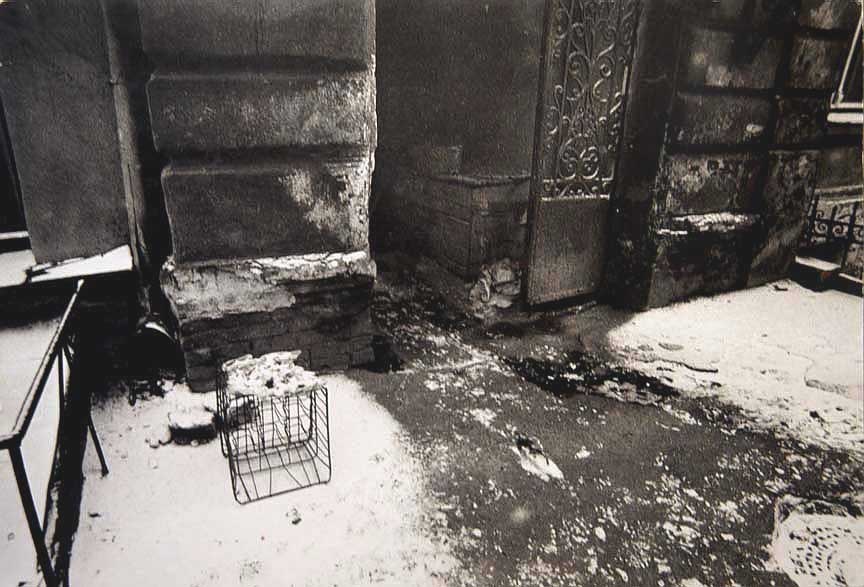Rerurn to Romy the Cat's Site
In the Forum: Analog Playback
In the Thread: I need a “second-type” phonostage.
Post Subject: Phonostage and Gog know what....Posted by Romy the Cat on: 6/1/2006
 hagtech wrote: hagtech wrote: |
| Interesting. I remember getting low contrast levels when using the asa 32 film (I think it was pan-x), but huge grey scales. Sometimes I shot in tri-x just to add drama. In the end though, my best prints were from the pan-x using nearly monochromatic enlarger illumination and then developing the paper for extraordinary long times. The subtleties and nuances in the image lived on. One thing I know is that narrow-banding the illumination gets you better contrast and sharpness through the enlarger lens. Fewer ghost images, backscatter, and stray rays. |
|
Actually it is not about the getting the low contrast but getting the lowest possible global contrast with maximum (or better to say optimum) frequency- contrast characteristic. Development of the print for a long time is fine, in fact as far as I concern it is absolutely mandatory. I developed prints in 3-4 time over-concentrated develop at height temperature and with excessive amount of antifogging Potassium Bromide. The key was also in the cooking the negatives in a certain way. The developer that invented was like nothing else. It had 4 developing agents in quite high concentration (Metol, Phenidone, Hydroquinonee, Glycin), supported with large amount of Sodium sulfite and practically with no Sodium Carbonate (believe me or not it was only 2 grammas). The developing agents have own ways to be soluble in concentrated sulfurous acid and I find way to deal with it without the oxidation of the agents. As the result I had very strong primordial soup where the different type of the developing agents in the certain proportion contributed own developing qualities but it all happened at very low pH where nothing can catalyze the development process. The development was quite long: ~ 20 minutes for 50ASA and it was in context of no antifogging ingredients: no benzotriazole and no ionic salts. It leaded to very low contract negative but with a phenomenal inner details, and particularly in the dark. At that time, when I was in middle of my teens I was a creative, artistic minded photographer, did “pure Art”, had expositions… who did not do it in teens?! (The image in the “Knowledge Tree” section is from that time) I loved the “low keys” and was truing to get as lot as possible “information load” in the density that approached the Dmax. The paintings of some mid centuries paintings encourage me but do accomplish it in photography was very-very complex. My 4 developing agents + some “different” printing method were the solution as I have seen it at that time. Here is one of my typical works from that time.

I was 15-16 at that time and this works is from my cycle about the Odessa’s unique living years. On the screed and via a digital camera it looks like crap bit on the original print there is a lot of “performance” in those dark, “almost black” regions…
 hagtech wrote: hagtech wrote: |
| In terms of audio, I think a loss of microdetail results in higher contrast. Sort of like a CD. The grey scale is quantized and you can only get so small. So any phonostage that smears or adds noise or grain tends to mask the subtle shades of music. There is a loss of resolving power. |
|
I do not think that it is juts about the present of the microdetail but rather how those microdetail related to everything else. I think sound is much more complex then image, although our vision is more perfect multi-angled compressor then our hearing.
 hagtech wrote: hagtech wrote: |
| So perhaps your front end is not warm, but rather emphasizes resolution and shades of grey. |
|
Hm, I would not say “emphasizes resolution” as the resolution is very corrupted word in audio lingo. I would say that I am after in my front end to get maximums identically for each atomic particle of presentation. A note should be very different from another note, as different as possible BUT at the same time it should be related to that “different” note. Everything works in there together: harmonistic, contrast, decays, compressions, phases randomanization and many things… The interesting is that whatever I do with phonocorrector and whatever I try… I in the end return to SU2 and 834PT and realize that it could not be bitten. Playing it is like returning home to a bed of a women you love after spending a weekend with a young and “effective” prostitute….
Rgs,
Romy the CatRerurn to Romy the Cat's Site